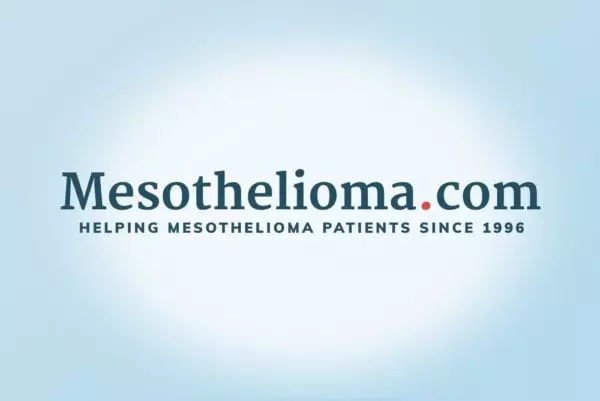Doctors diagnose roughly 3,000 cases of mesothelioma in the United States each year. Yet, there is often a misconception that it affects only blue-collar workers. The truth is anyone exposed to asbestos is at risk of developing the disease. And, many different kinds of people experience asbestos exposure.
Elizabeth Wasmund’s dad, Mark, was a lifelong attorney. When he started having chest and back pains, the family knew something was wrong. Soon, he would be fighting for his health.
A Family’s Life Disrupted by Mesothelioma
Elizabeth, one of five children, says her father was a simple pleasures kind of guy. He loved baseball and was a New York Mets fan. He enjoyed sitting by the water when the family would go to their Long Island summer house.
He was the hardest-working person Elizabeth knew. He rarely took a sick day and was never one to go to the doctor. But, he never missed one of the kids’ sporting events — even if it meant showing up for them in the suit he wore to work.
“He was very understated, and we just knew he was always there,” said Elizabeth. “He was very involved, despite being super busy with his work, which is really impressive.”
Unfortunately, worrisome symptoms began interrupting Mark’s life as an attentive father. His back and chest pains became more and more severe. During the summer of 2019, he went to see the family doctor. Concerned, the family physician sent him to get scans, where they found a tumor.
Specialists initially diagnosed him with lung cancer. Additional tests on the tumor proved it was stage 4 mesothelioma.
The family is not positive where Mark got exposed to asbestos. But, they believe it was from asbestos-contaminated talcum powder. He was a lifelong talcum powder user. According to Reuters, Johnson & Johnson talc periodically tested positive for asbestos from the 1970s to the 2000s. Mark’s consistent use of talc products increased his chances of asbestos exposure.
Learning About the Mesothelioma Diagnosis
Elizabeth remembers finding out about the mesothelioma diagnosis. Her mother, Maryam, called Elizabeth’s husband, Marc, first. Maryam wanted him to know, so he could be there for her when they called back to break the news.
“My dad was not overly emotional and didn’t share a lot, so it was too hard for him to tell all of us,” said Elizabeth. “My mom did, and my dad called later.”
Mark and his wife drove from Syracuse to New York City for his treatment every two weeks. Elizabeth remembers him seeming healthy, walking or riding his bike instead of taking the subway. Mark’s treatment included chemotherapy, radiation and surgery.
After surgery, Mark continued treatment in Syracuse with a round of targeted radiation. The family decided to live together to protect Mark from being exposed to COVID-19. It also allowed them to help Mark when he needed it.
Mark was fortunate to have a big family, giving him built-in support. Elizabeth, her four brothers and Maryam all acted as live-in nurses. They helped Mark when he was unable to do things on his own.
The Disease Progresses
Some cancer patients want to learn everything they can about the disease. Not Mark. After the diagnosis, he didn’t Google it once, but the family did. They knew how bleak the general mesothelioma prognosis was, but Mark didn’t care about that.
“In his mind, he was always going to beat this,” said Elizabeth. “He just wanted to do what he had to do.”
Unfortunately, the cancer continued to spread. By Christmas 2020, Mark started to lose feeling in his legs. A couple of months later, they chose to stop treatment. Mark used a wheelchair for the last four or five months of his life, and he spent his last month in hospice.
Elizabeth says the experience brought the family closer together. The family could reflect on what was happening, put things behind them and be close to Mark. It’s not something many families experience.
Mark passed away in the summer of 2021 shortly after he turned 62 years old.
Finding Support for the Mesothelioma Diagnosis
At his sickest, Mark had his four sons to pick him up and move him. He had his daughter close by to act as his work secretary. Elizabeth can’t imagine how difficult the disease is for someone who doesn’t have the support network Mark had.
Elizabeth knows the impact of mesothelioma goes beyond the 3,000 new diagnoses each year. There are friends and family affected as well. She believes people first need to acknowledge how difficult the disease is but also understand help is available.
“There’s a community of people that have been through this before or are going through this,” Elizabeth said. “So, there is a network and resources if you need it.”
She believes knowing someone else has experienced the same thing can be helpful. That community can provide insight and support for mesothelioma patients and their families.
Elizabeth believes her mom would have benefitted from knowing this. Her mom was with Mark every day and night, and she didn’t sleep much for two years. But, that time was meaningful and mattered.
“Having people there is the most important thing because of the prognosis,” Elizabeth said.
For people dealing with a mesothelioma diagnosis, support is available. The patient’s care team can recommend support groups and other local resources.




